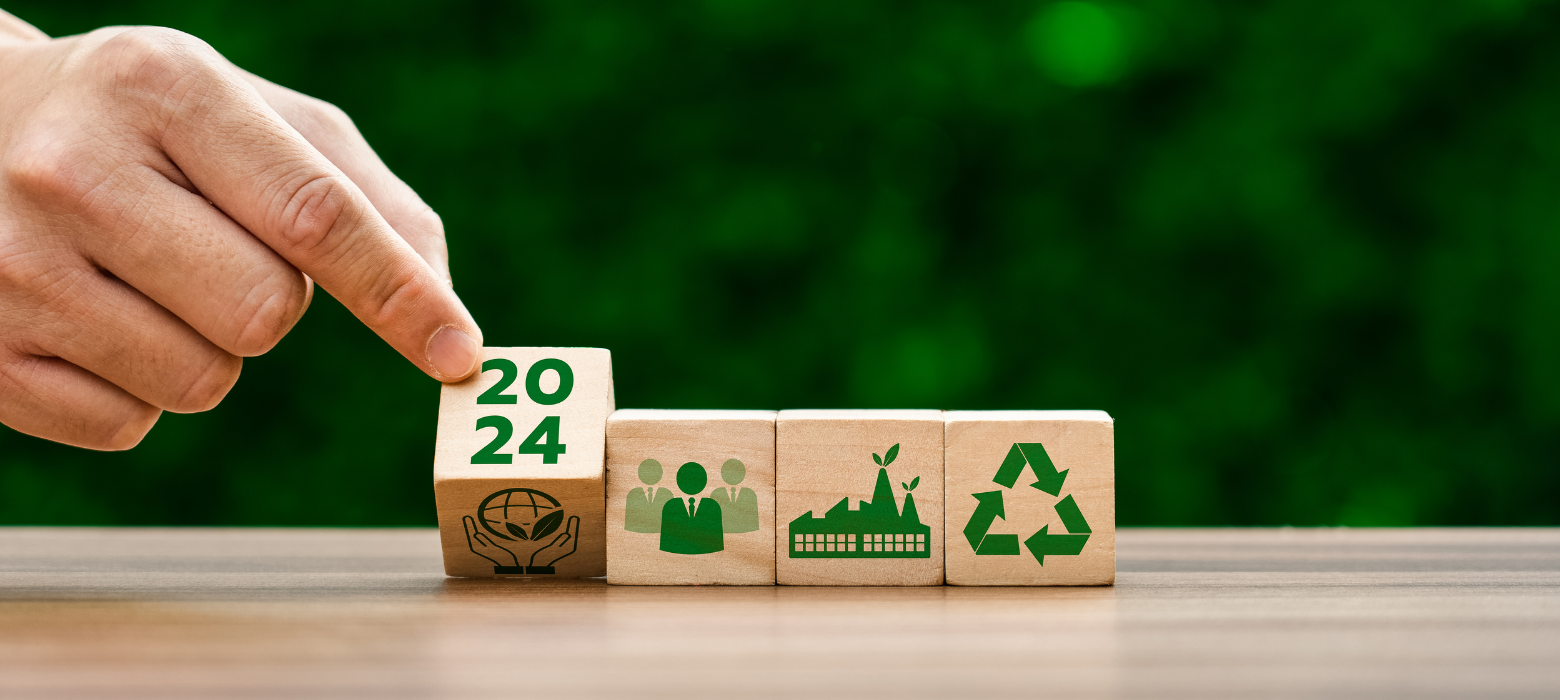
Sustainability is a multifaceted concept that has gained significant attention over the past few decades, becoming a crucial element in discussions about the future of our planet and society. Sustainability involves a holistic approach that encompasses not only environmental conservation but also economic stability and social equity.
Let’s unravel the layers of sustainability, exploring its key components, historical evolution, current trends, and the challenges it faces, as well as highlighting the role each individual can play in fostering a sustainable future.
The Three Pillars of Sustainability
Sustainability is traditionally built on three fundamental pillars: economic, environmental, and social—often referred to as the triple bottom line. Each pillar is crucial in its own right and interdependent with the others, forming the backbone of sustainable development strategies worldwide.
Economic Sustainability
Economic sustainability involves practices that support long-term economic growth without negatively impacting social, environmental, and cultural aspects of the community. It’s about systematically integrating economic efficiency, responsible resource management, and innovative practices that benefit all stakeholders. Examples of economically sustainable practices include:
- Sustainable Business Practices: Companies focus on creating products that are made to last longer, thus reducing waste and decreasing the need to consume natural resources.
- Investing in Renewable Energy: Transitioning from fossil fuels to renewable energy sources not only helps protect the environment but also creates jobs and drives technological innovation in new sectors.
The renewable energy sector is a prime example of economic sustainability at work. The Global Renewable Energy Status Report indicates that renewables accounted for 72% of all new power capacity installed in 2019, signaling a shift towards cleaner energy sources that are both environmentally and economically beneficial.
Environmental Sustainability
Environmental sustainability is perhaps the most widely recognized aspect of sustainability. It focuses on reducing the ecological footprint by conserving energy, minimizing waste, and preserving natural landscapes. Effective environmental sustainability practices ensure that the natural assets available today will be preserved for future generations. Some key practices include:
- Resource Management: Efficient use of water, energy, and other natural resources to minimize impact on the environment.
- Pollution Reduction: Implementing technologies and strategies that reduce air, water, and soil pollution.
Climate change is a critical concern within environmental sustainability. According to NASA, Earth’s average surface temperature has risen by about 1.18 degrees Celsius since the late 19th century, largely due to increased carbon dioxide and other human-made emissions into the atmosphere. This disturbing trend underscores the urgent need for sustainable practices that can help mitigate the impacts of global warming.
Social Sustainability
Social sustainability is essential for ensuring that the benefits of growth and development are equitably shared among all members of society. It emphasizes the need for fair labor practices, community development, and access to essential services like healthcare and education. Some initiatives in this area include:
- Fair Trade: Supporting fair wages and good employment conditions for workers in the developing world.
- Community Engagement: Programs designed to engage and uplift underprivileged communities, enhancing their capacity to contribute to and benefit from economic and social opportunities.
The concept of ‘food deserts’ – urban areas where it’s difficult to buy affordable or good-quality fresh food – highlights the need for social sustainability. Initiatives that aim to bring fresh produce markets to underserved communities or urban agriculture projects that empower locals to grow their own food are good examples of social sustainability in practice.
Historical Context and Evolution of Sustainability
Sustainability, as a concept, has evolved significantly over the centuries, adapting to the changing needs and understandings of societies. Its roots can be traced back to the environmental movements of the early 20th century, but it gained substantial prominence with the publication of the Brundtland Report in 1987.
Formally titled “Our Common Future,” the publication was produced by the World Commission on Environment and Development, led by Gro Harlem Brundtland. It introduced the most widely recognized definition of sustainable development:
“development that meets the needs of the present without compromising the ability of future generations to meet their own needs.”
Following the Brundtland Report, sustainability became a central theme in global discussions, leading to key international conferences such as the Earth Summit in Rio de Janeiro in 1992. This summit resulted in Agenda 21, a comprehensive plan of action to be taken globally, nationally, and locally by organizations of the United Nations, governments, and major groups to promote sustainable development.
In the years that followed, sustainability principles began to influence laws and regulations related to environmental protection, corporate governance, and social responsibility across the globe. Milestones such as the Kyoto Protocol in 1997 and the Paris Agreement in 2015 further emphasized the global consensus on the need for concerted efforts to combat climate change and promote sustainability.
Current Trends in Sustainability
Today, sustainability is at the forefront of innovation, with trends that reflect a blend of technology, societal shifts, and policy advancements. The acceleration of sustainable practices is evident across multiple sectors, driven by both technological advancements and a greater public awareness of environmental issues.
- Renewable Energy Technologies: Innovations in solar, wind, and hydroelectric power are making these energy sources more efficient and affordable than ever before. The transition to renewable energy is crucial for reducing greenhouse gas emissions and achieving energy sustainability.
- Sustainable Agriculture: Techniques such as vertical farming, hydroponics, and aquaponics are revolutionizing how food is produced. These methods use significantly less water and land compared to traditional farming and are less dependent on climate conditions, thereby increasing food security.
- Circular Economy: This economic system aims to eliminate waste and the continual use of resources. Circular strategies involve reusing, repairing, refurbishing, and recycling existing materials and products as long as possible. This approach not only supports environmental sustainability but also enhances economic growth and reduces resource depletion.
- Corporate Sustainability Reporting: More companies are now documenting their sustainability efforts and their impact on the environment. This transparency helps consumers make informed choices and encourages companies to adopt more sustainable practices.
Challenges to Achieving Sustainability
While the concept of sustainability is universally accepted as essential for our future, there are significant challenges and barriers that need to be addressed to fully implement sustainable practices globally.
- Economic Constraints: Transitioning to sustainable technologies and practices often requires substantial initial investments. For many businesses and governments, the short-term costs can be a deterrent despite the long-term benefits. This is particularly challenging in less economically developed countries where resources are limited, and priorities may lean towards immediate economic needs rather than long-term sustainability.
- Political and Legislative Barriers: Sustainable policies require strong political will and effective governance. Often, political interests and the influence of powerful lobby groups can slow down or block significant environmental legislation. Furthermore, global sustainability efforts demand cooperation between nations, which can be complicated by differing political agendas and levels of economic development.
- Technological and Infrastructure Limitations: In many parts of the world, the infrastructure needed to support sustainable technologies is not yet in place. Developing and deploying technologies that can operate efficiently at scale, such as renewable energy systems and waste recycling plants, requires not only funding but also innovation in technology and management practices.
- Social Resistance: Changes in social behavior and norms are necessary for sustainability to be embraced widely. However, altering consumer habits and lifestyles can be challenging, especially when it involves sacrificing convenience or incurring higher costs. Public awareness and education play critical roles in overcoming this hurdle, as understanding the importance of sustainability can encourage more supportive attitudes and actions.
The Role of Individuals in Promoting Sustainability
Despite these challenges, individuals hold significant power in promoting sustainability through their daily choices and advocacy. Here are practical steps everyone can take to contribute to a more sustainable future:
- Conscious Consumption: Being mindful of what you buy and use can have a profound impact. Opting for products that are durable, repairable, and sustainably sourced helps reduce waste and environmental degradation. Additionally, reducing consumption overall—such as minimizing single-use plastics and buying less but higher quality—can drive demand for more sustainable products.
- Energy Conservation: Simple actions like switching to energy-efficient appliances, reducing heating and cooling consumption, and using public transport or car-sharing can significantly lower your carbon footprint.
- Supporting Sustainable Businesses: Choosing to buy from companies that are transparent about their supply chain and committed to sustainable practices supports the broader movement towards corporate sustainability.
- Advocacy and Education: Educating oneself and others about environmental issues and advocating for sustainable policies at local, national, and international levels are crucial. Individuals can influence policy by voting, participating in community discussions, and supporting NGOs and movements that push for environmental change.
By actively participating in sustainable practices, individuals can make a real difference, influencing both the market and policy towards a more sustainable future.
Conclusion
Achieving sustainability is undoubtedly challenging. It requires systemic change, long-term thinking, and cooperation across countries, industries, and communities. However, the transition towards sustainable practices can also stimulate innovation, open up new business avenues, and improve quality of life.
As we continue to push the boundaries of what’s possible and strive for a sustainable future, it’s important for everyone to participate actively. Whether through informed purchasing, energy conservation, advocacy, or simply by spreading awareness, each effort counts. The future of our planet and its inhabitants depends not just on recognizing what sustainability is, but on committing to sustainable practices daily.
Related Articles
The Environmental and Economic Benefits of Tree-Free Paper Products
Tree-free paper products offer environmental and economic benefits to businesses that are seeking innovative solutions to reduce their ecological footprint.
How Private Label Can Differentiate and Elevate Your Distribution Business
By offering private label sustainability products companies can really stand out to their environmentally conscious consumers and business partners alike.
Celebrating International Plastic Bag Free Day: How Your Business Can Lead the Way
International Plastic Bag Free Day presents an opportunity for businesses to demonstrate their commitment to environmental sustainability and help reduce waste.
Streamline Your Inventory: Effective SKU Rationalization Strategies for Distributors who Service Clients with Paper and Plastics Disposables
With effective SKU rationalization, paper and plastics distributors can optimize their warehouse and significantly improve their overall operational efficiency.
Full Circle Solutions: How Commercial Composting Can Transform Your Business’s Waste Stream
As businesses prioritize sustainability, commercial composting emerges as a pivotal solution in transforming waste streams and advancing the circular economy.
Polylactic Acid Explained: A Sustainable Solution for Eco-Conscious Companies
Polylactic Acid offers a biodegradable alternative to traditional plastics, aligning with the increasing demand for environmentally friendly products.









